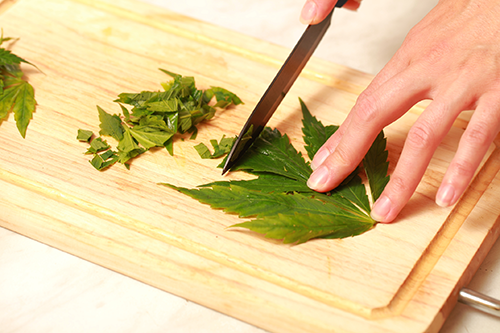In keeping with my commitment to bring a helpful monthly dietary restrictions calendar to everyone, here are March dates to keep in mind as you plan menus for March events.
March 4 – Mahāśivarātrī (Shiv Ratri)
Observance & Dietary Restriction
Mahāśivarātrī (Shiv Ratri) is a Hindu festival. Followers of Shaivism, which is one of four Hindu religions, worship Lord Shiva as a Monotheist Lord. The festival is a vigil in His honor and is observed with a 24-hour fast from food and water.
How to Include Participants
While we will still be feeding our guests and employees on this day, it can be helpful to provide a comfortable area that is free from food and water as well as any possibility of being able to smell food. Don’t make the area so far away from the rest of the event that people will feel isolated or secluded. Just make it far enough away and comfortable, so attendees have an option remain involved with the event while respecting their religious dietary observance.
March 6 – Bahå’i
Observance & Dietary Restriction
Bahå’i was established in the 1960s. It’s a monotheistic religion with about 5-7 million worshippers, worldwide, although it originally grew out of Persia and promotes unity, equality, and that there is worth in all religions. The March fast is meant to drive spiritual purification, reflection on one’s spiritual progress, and to recommit to a detachment from material connections.
How to include participants
This is a nineteen day fast, so it is longer than the average religious fast. This is one of the most important holy observances for this religion, other than obligatory prayer. Bahå’i’s will avoid all alcohol during this period and will abstain from food and drink from sunrise to sunset. It’s best to provide a space where anyone who is fasting or needs to skip a meal will be able to network and remain connected to the even during daytime mealtimes. Of course, we should also avoid making alcohol a pressured choice at mixers, but have plenty of alcohol-free drink choices.
March 6 – Ash Wednesday
Observance & Dietary Restriction
Ash Wednesday & Lent is the beginning of the liturgical season of Lent for Roman Catholics and Protestants. It’s forty days of spiritual renewal and preparation leading into a solemn day of feasting, known as Easter. This year, Lent begins on Ash Wednesday, February 14th, and ends on Thursday, March 29th.
How to Include Participants
While prayer is central to observing Lent, fasting is also a traditional practice. Roman Catholics, in particular, will fast and refrain from meat. While many choose something personal that they will give up for Lent and we can’t necessarily anticipate those choices, the avoidance of meat can easily be built into menus. Be sure to provide nutritious and delicious food that amounts to more than salads and tofu. When creating menus, label the vegetarian dishes as Lent-friendly during these forty days to ensure people know you are aware and are being inclusive of the religious observance.
March 11 – Clean Monday
Observance & Dietary Restriction
Clean Monday or Ash Monday is the first day of Lent for Orthodox Christians. Orthodox Lent is the forty days before Holy Week. Holy Week is considered a separate religious observance. Clean Monday, Lent, and Holy Week generally mean fasting and a diet free from meat products.
How to Include Participants
Just as Lent for Roman Catholics is free from meat products, we also see a vegetarian diet for Orthodox Christians. Provide a nutritious, enticing menu with a range of Lent-friendly, vegetarian dishes. Use labels that include religious observances, just as you would add “Kosher” to a label to help guests understand what’s available to them and know they were included in the planning process.
March 20-21 – Purim
Observance & Dietary Restriction
Purim is one of the most important Jewish holidays, commemorating a time when Jews lived in Persia and were saved by a Jewish woman named Esther, leading to the recording of the events in the Book of Esther. It begins at sundown and can lead to celebrations with costumes and readings.
How to include participants
The biggest prescription is that Jews are not supposed to go about their day as usual. There are some traditional foods that may be served, but the most important accomodation will be to make sure kosher food is available. Some people who don’t follow kosher to the last detail will be more likely to follow these rules during this holy time.
March 20-21 – Holi
Observance & Dietary Restriction
Holi is a Hindu holiday called the Festival of Colors. It commemorates scriptures on good and evil by celebrating a colorful spring and a farewell to winter. It’s famously celebrated by throwing colored water and powder on each other, as well as bonfires, lights, and some traditional foods.
How to include participants
Hindus do not eat eggs, fish, meat, or poultry, but do eat dairy. For this reason, they are considered to be lacto-vegetarians. Holi delicacies are regional, but colorful dishes are the key. A few great examples of menu staples can be found at First We Feast. Adding colorful, expressive dishes that are free-from eggs, fish, meat, and poultry would be a wonderful way to add Holi to your event.
March 20 – Spring Equinox
Observance & Dietary Restriction
The Spring Equinox, also called Ostara or Alban Eilir is a Pagan, Wiccan, and Druid holiday. It is also sometimes called Eostre. It’s timing with Spring means it is primarily recognized for fertility and conception. Its recognized as a time when the Pagan Goddess will conceive God’s child, who will be born at the winter solstice.
How to include participants
While the day doesn’t have any fasting or restrictions associated with it, there is a feast, and the observance is considered a celebration. Foods that honor the onset of Spring, such as eggs and spring greens are common. Mint chutney, roasted lamb, and deviled eggs have become common staples. Bringing this to the banquet or menu would give Wiccans a way to celebrate, even while at an event or meeting.
March 20-21 – Naw-Ruz
Observance & Dietary Restriction
Naw-Ruz, pronounced Nowruz, is a Persian new year practiced by Bahá’í. This day marks the end of the nineteen-day fast, which begins on March 2nd. This is a time of reaffirmation by strengthening ties with one’s network. Many will host gatherings, and communal meals are common.
How to include participants
This day is set aside for communal feasting, rather than fasting. There are a few foods set aside as traditional dishes that celebrate the Persian new year. Sabzeh, for example, or lentil, is wheat (barley sprouts) grown in a dish, to symbolize rebirth and renewal for the new year. Somaq, the sumac spice, is a red berry that is a staple in Iranian kabob dishes, representing the sunrise, and new beginnings. Adding a few feast staples to the menu can add a new dimension of inclusivity for those who participate in Naw-Ruz.



